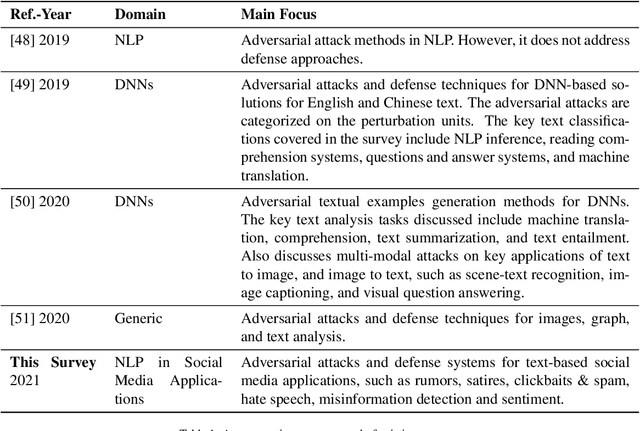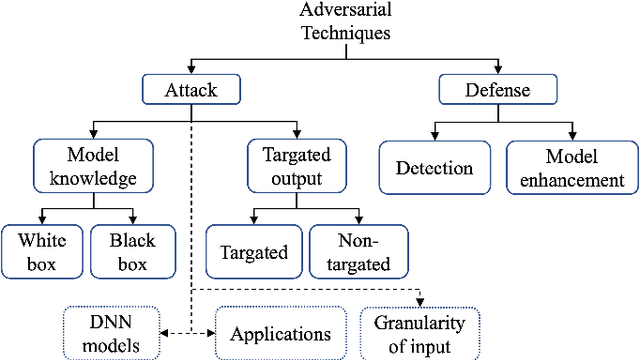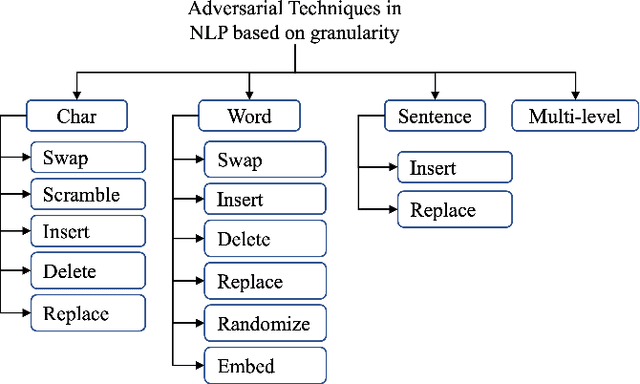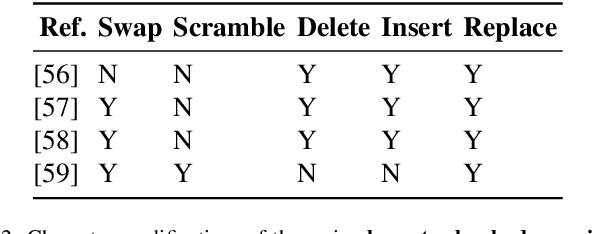Mahmoud Nazzal
ViGText: Deepfake Image Detection with Vision-Language Model Explanations and Graph Neural Networks
Jul 24, 2025Abstract:The rapid rise of deepfake technology, which produces realistic but fraudulent digital content, threatens the authenticity of media. Traditional deepfake detection approaches often struggle with sophisticated, customized deepfakes, especially in terms of generalization and robustness against malicious attacks. This paper introduces ViGText, a novel approach that integrates images with Vision Large Language Model (VLLM) Text explanations within a Graph-based framework to improve deepfake detection. The novelty of ViGText lies in its integration of detailed explanations with visual data, as it provides a more context-aware analysis than captions, which often lack specificity and fail to reveal subtle inconsistencies. ViGText systematically divides images into patches, constructs image and text graphs, and integrates them for analysis using Graph Neural Networks (GNNs) to identify deepfakes. Through the use of multi-level feature extraction across spatial and frequency domains, ViGText captures details that enhance its robustness and accuracy to detect sophisticated deepfakes. Extensive experiments demonstrate that ViGText significantly enhances generalization and achieves a notable performance boost when it detects user-customized deepfakes. Specifically, average F1 scores rise from 72.45% to 98.32% under generalization evaluation, and reflects the model's superior ability to generalize to unseen, fine-tuned variations of stable diffusion models. As for robustness, ViGText achieves an increase of 11.1% in recall compared to other deepfake detection approaches. When facing targeted attacks that exploit its graph-based architecture, ViGText limits classification performance degradation to less than 4%. ViGText uses detailed visual and textual analysis to set a new standard for detecting deepfakes, helping ensure media authenticity and information integrity.
Demo: SGCode: A Flexible Prompt-Optimizing System for Secure Generation of Code
Sep 11, 2024


Abstract:This paper introduces SGCode, a flexible prompt-optimizing system to generate secure code with large language models (LLMs). SGCode integrates recent prompt-optimization approaches with LLMs in a unified system accessible through front-end and back-end APIs, enabling users to 1) generate secure code, which is free of vulnerabilities, 2) review and share security analysis, and 3) easily switch from one prompt optimization approach to another, while providing insights on model and system performance. We populated SGCode on an AWS server with PromSec, an approach that optimizes prompts by combining an LLM and security tools with a lightweight generative adversarial graph neural network to detect and fix security vulnerabilities in the generated code. Extensive experiments show that SGCode is practical as a public tool to gain insights into the trade-offs between model utility, secure code generation, and system cost. SGCode has only a marginal cost compared with prompting LLMs. SGCode is available at: http://3.131.141.63:8501/.
Genetic Algorithm-Based Dynamic Backdoor Attack on Federated Learning-Based Network Traffic Classification
Sep 27, 2023



Abstract:Federated learning enables multiple clients to collaboratively contribute to the learning of a global model orchestrated by a central server. This learning scheme promotes clients' data privacy and requires reduced communication overheads. In an application like network traffic classification, this helps hide the network vulnerabilities and weakness points. However, federated learning is susceptible to backdoor attacks, in which adversaries inject manipulated model updates into the global model. These updates inject a salient functionality in the global model that can be launched with specific input patterns. Nonetheless, the vulnerability of network traffic classification models based on federated learning to these attacks remains unexplored. In this paper, we propose GABAttack, a novel genetic algorithm-based backdoor attack against federated learning for network traffic classification. GABAttack utilizes a genetic algorithm to optimize the values and locations of backdoor trigger patterns, ensuring a better fit with the input and the model. This input-tailored dynamic attack is promising for improved attack evasiveness while being effective. Extensive experiments conducted over real-world network datasets validate the success of the proposed GABAttack in various situations while maintaining almost invisible activity. This research serves as an alarming call for network security experts and practitioners to develop robust defense measures against such attacks.
Multi-Instance Adversarial Attack on GNN-Based Malicious Domain Detection
Aug 22, 2023



Abstract:Malicious domain detection (MDD) is an open security challenge that aims to detect if an Internet domain is associated with cyber-attacks. Among many approaches to this problem, graph neural networks (GNNs) are deemed highly effective. GNN-based MDD uses DNS logs to represent Internet domains as nodes in a maliciousness graph (DMG) and trains a GNN to infer their maliciousness by leveraging identified malicious domains. Since this method relies on accessible DNS logs to construct DMGs, it exposes a vulnerability for adversaries to manipulate their domain nodes' features and connections within DMGs. Existing research mainly concentrates on threat models that manipulate individual attacker nodes. However, adversaries commonly generate multiple domains to achieve their goals economically and avoid detection. Their objective is to evade discovery across as many domains as feasible. In this work, we call the attack that manipulates several nodes in the DMG concurrently a multi-instance evasion attack. We present theoretical and empirical evidence that the existing single-instance evasion techniques for are inadequate to launch multi-instance evasion attacks against GNN-based MDDs. Therefore, we introduce MintA, an inference-time multi-instance adversarial attack on GNN-based MDDs. MintA enhances node and neighborhood evasiveness through optimized perturbations and operates successfully with only black-box access to the target model, eliminating the need for knowledge about the model's specifics or non-adversary nodes. We formulate an optimization challenge for MintA, achieving an approximate solution. Evaluating MintA on a leading GNN-based MDD technique with real-world data showcases an attack success rate exceeding 80%. These findings act as a warning for security experts, underscoring GNN-based MDDs' susceptibility to practical attacks that can undermine their effectiveness and benefits.
Semi-decentralized Inference in Heterogeneous Graph Neural Networks for Traffic Demand Forecasting: An Edge-Computing Approach
Feb 28, 2023Abstract:Accurate and timely prediction of transportation demand and supply is essential for improving customer experience and raising the provider's profit. Recently, graph neural networks (GNNs) have been shown promising in predicting traffic demand and supply in small city regions. This awes their capability in modeling both a node's historical features and its relational information with other nodes. However, more efficient taxi demand and supply forecasting can still be achieved by following two main routes. First, is extending the scale of the prediction graph to include more regions. Second, is the simultaneous exploitation of multiple node and edge types to better expose and exploit the complex and diverse set of relations in a traffic system. Nevertheless, the applicability of both approaches is challenged by the scalability of system-wide GNN training and inference. An immediate remedy to the scalability challenge is to decentralize the GNN operation. However, decentralizing GNN operation creates excessive node-to-node communication overhead which hinders the potential of this approach. In this paper, we propose a semi-decentralized approach based on the use of multiple, moderately sized, and high-throughout cloudlet communication networks on the edge. This approach combines the best features of the centralized and decentralized settings; it may minimize the inter-cloudlet communication thereby alleviating the communication overhead of the decentralized approach while promoting scalability due to cloudlet-level decentralization. Also, we propose a heterogeneous GNN-LSTM algorithm for improved taxi-level demand and supply forecasting. This approach allows for handling dynamic taxi graphs where nodes are taxis. Through a set of experiments over real data, we show the advantage of the semi-decentralized approach as tested over our GNN-LSTM algorithm for taxi demand and supply prediction.
Adversarial Attacks and Defenses for Social Network Text Processing Applications: Techniques, Challenges and Future Research Directions
Oct 26, 2021



Abstract:The growing use of social media has led to the development of several Machine Learning (ML) and Natural Language Processing(NLP) tools to process the unprecedented amount of social media content to make actionable decisions. However, these MLand NLP algorithms have been widely shown to be vulnerable to adversarial attacks. These vulnerabilities allow adversaries to launch a diversified set of adversarial attacks on these algorithms in different applications of social media text processing. In this paper, we provide a comprehensive review of the main approaches for adversarial attacks and defenses in the context of social media applications with a particular focus on key challenges and future research directions. In detail, we cover literature on six key applications, namely (i) rumors detection, (ii) satires detection, (iii) clickbait & spams identification, (iv) hate speech detection, (v)misinformation detection, and (vi) sentiment analysis. We then highlight the concurrent and anticipated future research questions and provide recommendations and directions for future work.
 Add to Chrome
Add to Chrome Add to Firefox
Add to Firefox Add to Edge
Add to Edge